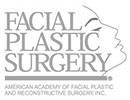Preparation Before a Blepharoplasty is Important
To start you must be physically and psychologically prepared to have achieve a great recovery from a blepharoplasty or eyelid surgery. First a thorough review of your medical history has to be done at your initial consultation. Patients who have underlying medical problems may or may not be good candidates for blepharoplasty surgery and sometimes their medical problems or habits may unfortunately impact the duration of their recovery. I have advised some patients not to have surgery because of the instability of their underlying medical condition increases to risks of surgery to an unacceptable level. Risks versus benefits are always weighed before you make a decision to have surgery.
Some questions to think about before eyelid surgery include:
- Do you have a tendency to have prolonged bleeding or bruising?
- Are you on blood thinners like aspirin, Advil, Motrin, fish oil, vitamin E or omega 3 supplements?
- Do you have high blood pressure?
- Do you have diabetes and is it well controlled?
- Do you have any allergies to medication or latex?

Steps before Eyelid Surgery to Speed Recovery
Blood thinners may lead to prolonged bleeding during your blepharoplasty procedure. When excessive bleeding occurs the surgeon has to use a cautery to stop the bleeding which ultimately leads to greater degrees of inflammation and swelling and a prolonged recovery. Therefore stopping these drugs at least 10 to 14 days in advance of your surgery will actually shorten your recovery time.
If you have high blood pressure than I would advise that you continue taking your blood pressure medication even during the day of eyelid surgery because an elevated blood pressure can again lead to excessive bleeding and bruising. It is also important to make sure that if you have diabetes it is well controlled. Uncontrolled diabetics usually have prolonged healing and an increased frequency of infections following surgery therefore your blood sugar must be tightly controlled. If you are a smoker, I would recommend cutting down before your surgery. The reason is because smoking impacts wound healing. Stopping two weeks before surgery and at least ten days during post operative recovery period will help you heal faster.
Your safety is always the top priority therefore alerting your oculoplastic or facial plastic surgeon to any allergies you might have to latex gloves, drapes, or medication is important. This is only a partial list of precautionary questions and steps that I take to ensure your safety and rapid recovery.
During eyelid surgery to limit bleeding, your doctor should use local anesthesia like lidocaine mixed with epinephrine and tranexamic acid. Your surgeon should be diligent during your blepharoplasty to make sure you get minimal bleeding and oozing by limiting cauterization they do of the eyelid blood vessels. The goal during during surgery is to have limited bruising and swelling.
After Surgery Expect Swelling
Following surgery, I recommend extra strength acetaminophen (Tylenol) every 4-6 hours automatically while awake to prevent most of the discomfort. You may shower and wash your hair the next day. For the first 48 hours apply cold compress to your eyelids to help to reduce swelling and inflammation. I recommend that you place several pieces of wet gauze inside a Ziplock bag and place these “little packets” in the freezer for 10-15 minutes. These cold compresses are ideal because they are malleable and conform to the contours of your eyelids. These cold compresses should be applied for 5-10 minutes every 30 minutes while awake for the first two days. After two days switch to warm compresses by placing wet gauze in the microwave for 10-15 seconds. The gauze should be warm, not hot. These warm compresses will dilate your veins and speed up the absorption of any bruising that may have occurred. Despite all precautions, bruising still may occur and drift downward by gravity to your lower eyelids and cheeks. Don’t be alarmed. This is a normal consequence of eyelid surgery.
The sutures that are used to close the eyelid incisions cut off the lymphatic drainage. Excess tissue fluid accumulation cause the eyelids to swell. Once the sutures are removed in 5 days, the swelling will dissipate quickly over the next 5 days.
Limit Exercise After Blepharoplasty
Any activities that raise your blood pressure or make you strain could potentially cause you to have an early or delayed bleeding episode which will prolong your recovery. Two days following surgery you may walk and ride a stationary bike at a moderate pace but you cannot weight lift or perform strenuous exercise routine for 14 days. By the end of two weeks, you should be 90% healed. That does not mean that the incisions are not noticeable. They will initially appear pink then over several months the incisions will fade.
If you follow my recommendations, in most cases, rapid healing and resolution of your swelling and bruising will occur so that you will able to resume your normal social and professional activities quickly and safely.






